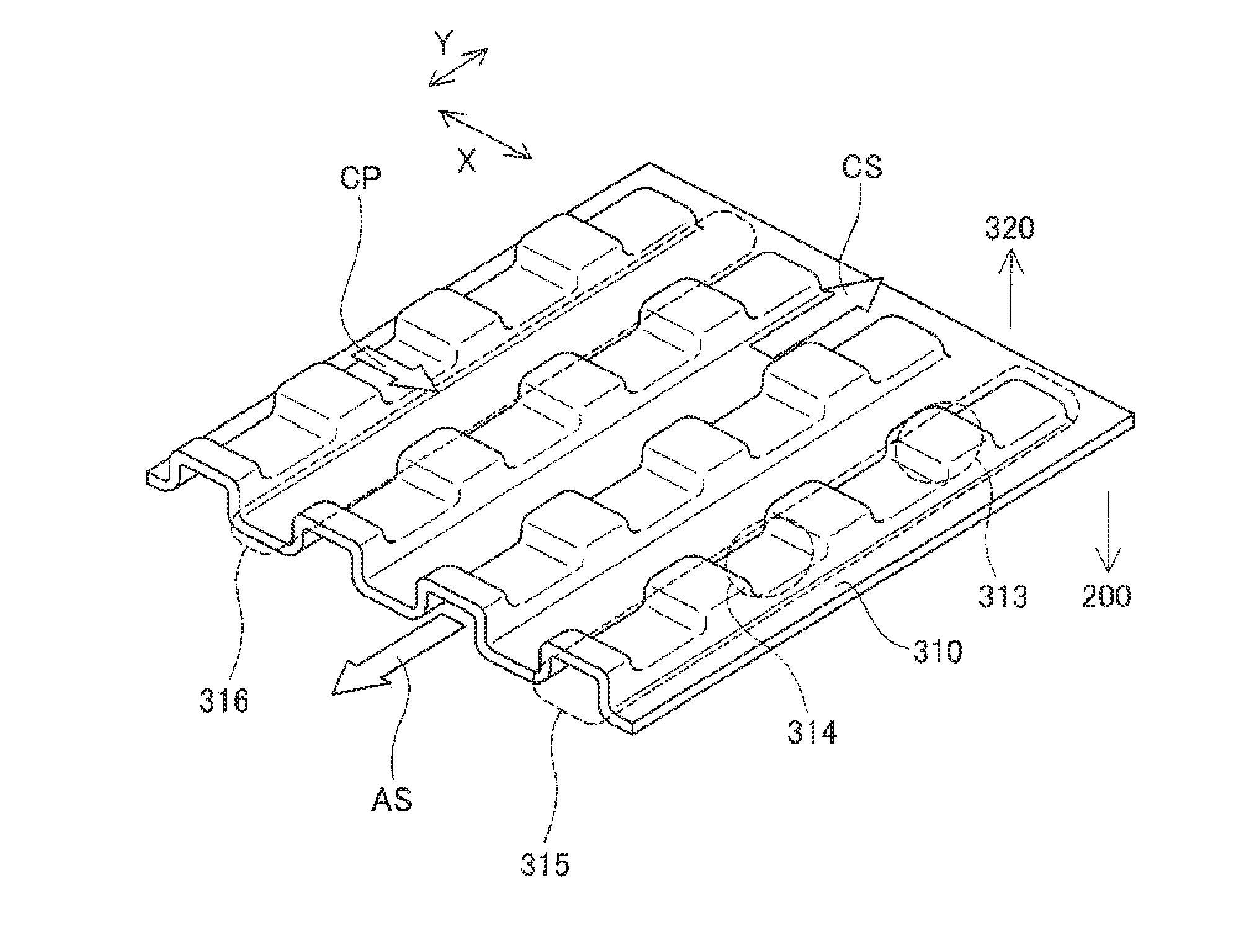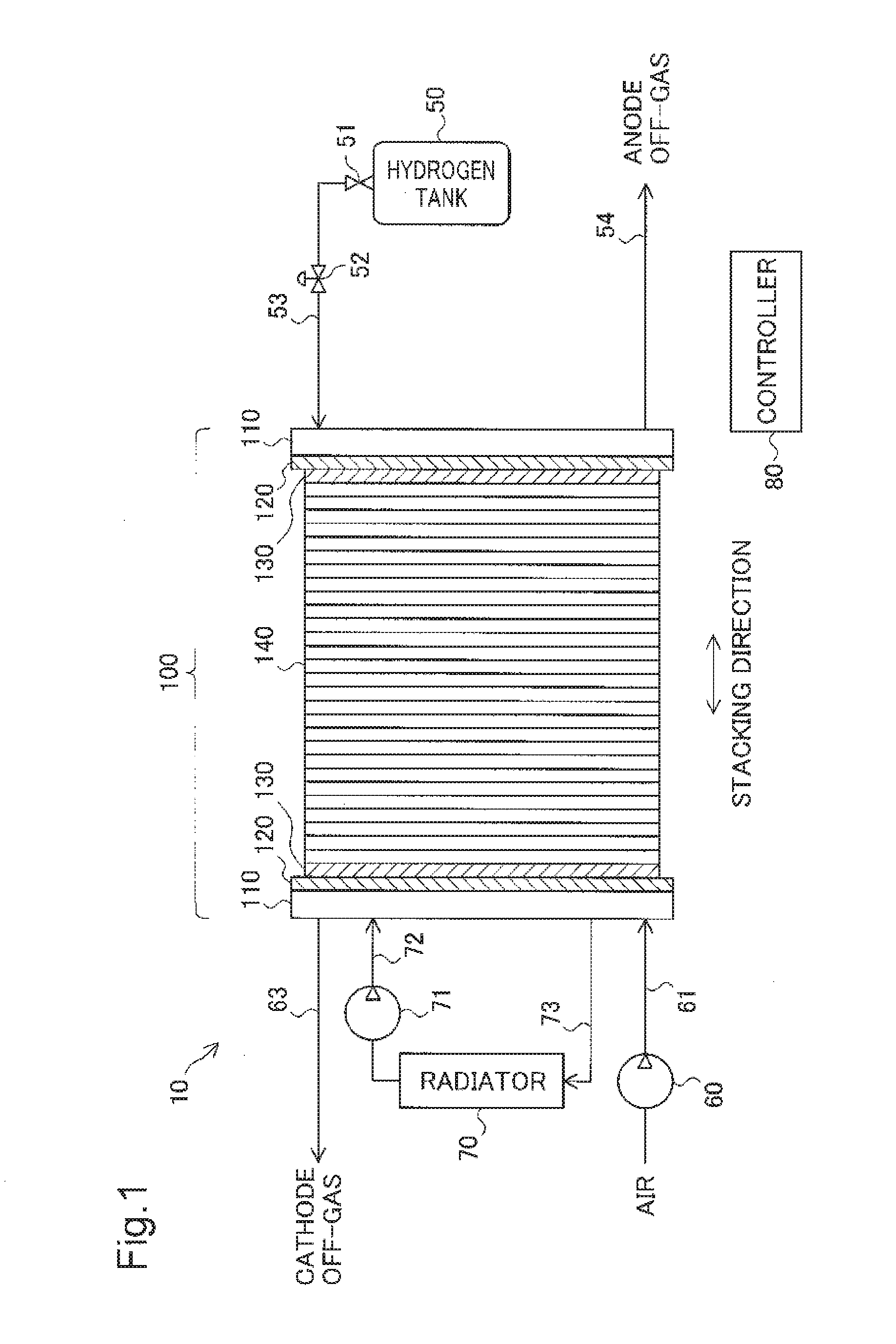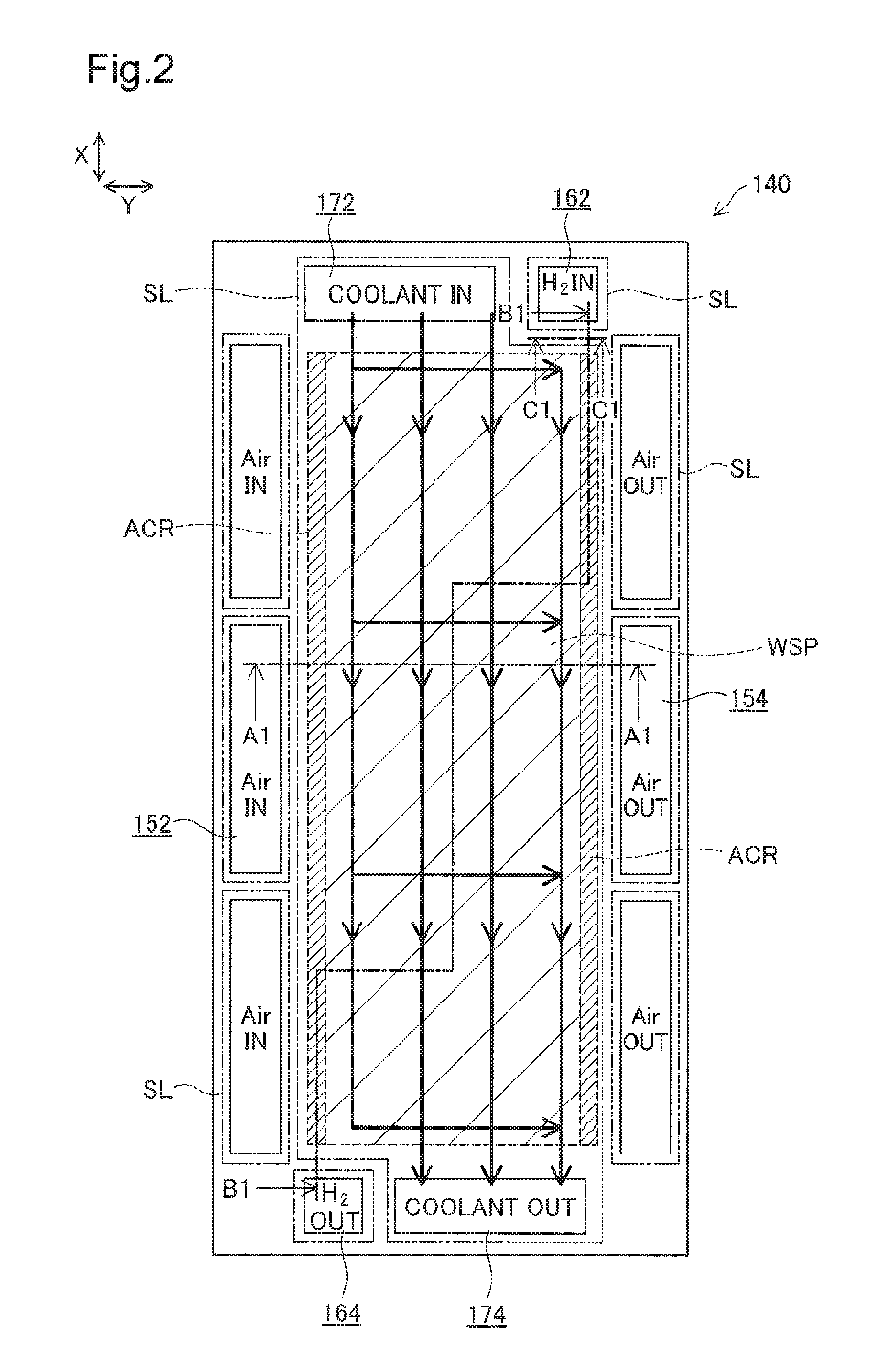Separator for fuel cell, fuel cell and method of manufacturing fuel cell
a technology of separator and fuel cell, which is applied in the direction of fuel cell details, electrochemical generators, final product manufacture, etc., can solve the problems of less flexibility in arrangement of flow paths for fluids, less flexibility in thermal design in cell plane, and less flexibility in arrangement. , to achieve the effect of improving the flexibility in setting the flow direction, less flexibility in arrangement, and less flexibility in thermal design
- Summary
- Abstract
- Description
- Claims
- Application Information
AI Technical Summary
Benefits of technology
Problems solved by technology
Method used
Image
Examples
first embodiment
A. First Embodiment
[0107]FIG. 1 is an explanatory diagram illustrating the schematic configuration of a fuel cell system 10 according to a first embodiment of the invention. The fuel cell system 10 includes a fuel cell 100. The fuel cell 100 has a stack structure formed by stacking an end plate 110, an insulator plate 120, a collector plate 130, a plurality of unit cells 140, a collector plate 130, an insulator plate 120 and an end plate 110 in this sequence.
[0108]Hydrogen as a fuel gas is supplied from a hydrogen tank 50 for storing high-pressure hydrogen to the fuel cell 100 via a shut-off valve 51, a regulator 52, and a piping 53. The supplied hydrogen is distributed into the respective unit cells 140 via a fuel gas supply manifold (described later) and is used for power generation by the respective unit cells 140. The hydrogen that is not used by the respective unit cells 140 (anode off-gas) is collected via a fuel gas exhaust manifold (described later) and is discharged through...
second embodiment
B. Second Embodiment
[0137]FIG. 7 is an explanatory diagram illustrating the cross sectional structure of a fuel cell 100 according to a second embodiment. FIG. 7 shows a partial cross section of the fuel cell 100 at the position of B1-B1 in FIG. 2. The fuel cell 100 of the seventh embodiment differs in the arrangement of tunnel flow paths TR from the fuel cell 100 of the first embodiment (FIG. 4), but otherwise has the similar structure to that of the fuel cell 100 of the first embodiment. The tunnel flow path TR is a flow path that runs below the seal lines SL formed by the seals 440 and 450 (on the side of the power generation layer 200). Like the first embodiment, the tunnel flow path TR of the second embodiment is provided as a flow path that communicates between the fuel gas supply manifold 162 and the common rail ACR for the fuel gas and between the fuel gas exhaust manifold 164 and the common rail ACR for the fuel gas.
[0138]In the fuel cell 100 of the first embodiment, the tu...
third embodiment
C. Third Embodiment
[0142]FIG. 8 is an explanatory diagram illustrating the structure around tunnel flow paths TR in a fuel cell 100 according to a third embodiment. FIG. 8 shows the plane of the tunnel flow paths TR and the common rail ACR for the fuel gas communicating with the tunnel flow paths TR and the cross sections at a position A2-A2 and at a position B2-B2 on the plane. The fuel cell 100 of the third embodiment differs in the arrangement of the tunnel flow paths TR from the fuel cell 100 of the first embodiment, but otherwise has the similar structure to that of the fuel cell 100 of the first embodiment. Each of the tunnel flow paths TR is provided as a flow path that runs below the seal lines SL formed by the seals 440 and 450 (on the side of the power generation layer 200) to communicate between the fuel gas supply manifold 162 and the common rail ACR for the fuel gas and between the fuel gas exhaust manifold 164 and the common rail ACR for the fuel gas.
[0143]As shown in ...
PUM
| Property | Measurement | Unit |
|---|---|---|
| curvature radius Ra | aaaaa | aaaaa |
| draft angle θA | aaaaa | aaaaa |
| draft angle θA | aaaaa | aaaaa |
Abstract
Description
Claims
Application Information
 Login to View More
Login to View More - R&D
- Intellectual Property
- Life Sciences
- Materials
- Tech Scout
- Unparalleled Data Quality
- Higher Quality Content
- 60% Fewer Hallucinations
Browse by: Latest US Patents, China's latest patents, Technical Efficacy Thesaurus, Application Domain, Technology Topic, Popular Technical Reports.
© 2025 PatSnap. All rights reserved.Legal|Privacy policy|Modern Slavery Act Transparency Statement|Sitemap|About US| Contact US: help@patsnap.com



